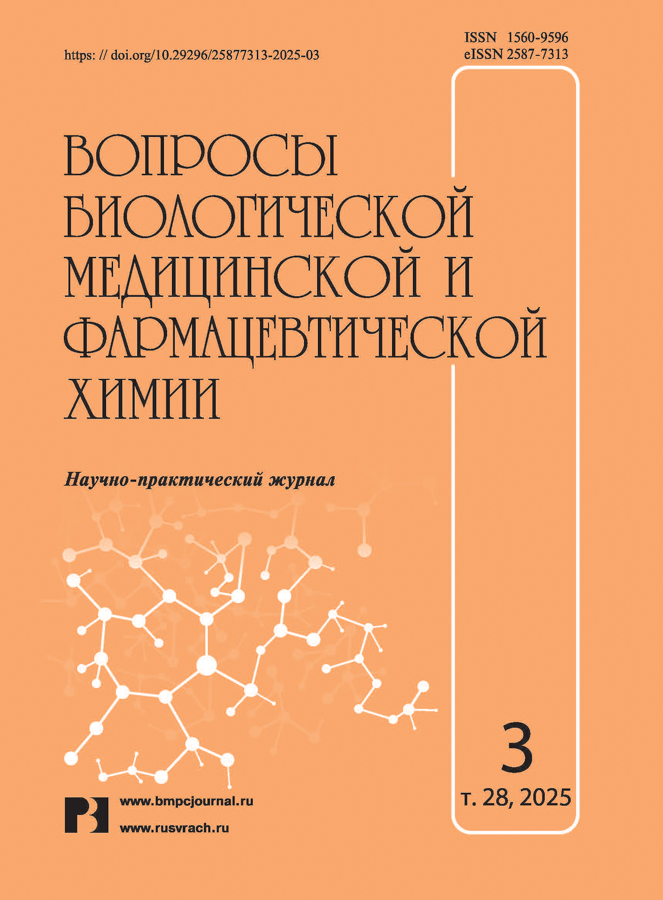Comparative assessment of the applicability of different chromatographic methods in the control of ethylene glycol and diethylene glycol impurities in pharmaceuticals
- 作者: Paskar I.V.1, Senchenko S.P.1, Voroncova I.S.1, Borkovskaya Е.V.1, Kiper R.A.1, Paskar N.G.2, Zaikin P.G.3, Romanenkova A.A.3, Kobeleva T.N.3
-
隶属关系:
- LLC Research and testing center «FARMOBORONA»
- I.M. Sechenov First Moscow State Medical University (Sechenov University) Ministry of Health of the Russian Federation
- GEROPHARM R&D Center
- 期: 卷 28, 编号 3 (2025)
- 页面: 13-20
- 栏目: Pharmaceutical chemistry
- URL: https://journals.eco-vector.com/1560-9596/article/view/677699
- DOI: https://doi.org/10.29296/25877313-2025-03-02
- ID: 677699
如何引用文章
详细
Introduction. Ethylene glycol and diethylene glycol are highly toxic compounds with adverse effects on the central nervous system and parenchymatous organs. A number of excipients such as glycerol, propylene glycol and polyethylene glycol may be the source of these impurities in pharmaceutical preparations. It is therefore necessary to control the ethylene glycol and diethylene glycol content for the safe use of such medicinal products.
The regulatory documents provide such methods of their analysis as thin-layer chromatography, high-performance liquid chromatography and gas chromatography. These methods differ in sensitivity and selectivity, which requires an assessment of their applicability for the analysis of toxic impurities of ethylene glycol and diethylene glycol in various dosage forms.
Objective of the study. On the example of a sample of solution for subcutaneous and intravenous administration containing insulin aspart 100 U/mL, to conduct a comparative assessment of the applicability of high-performance liquid chromatography and gas chromatography methods in the control of the content of impurities of ethylene glycol and diethylene glycol.
Material and Methods. The object of the study was a sample of solution for subcutaneous and intravenous administration containing insulin aspart 100 U/mL. This preparation contains glycerol as a source of the impurities sought. The tests were carried out on Agilent brand liquid chromatograph and Chrozen brand gas chromatograph.
Results. Methods for quantitative determination of ethylene glycol and diethylene glycol by high-performance liquid chromatography and gas chromatography in a sample of solution for subcutaneous and intravenous administration were developed.
According to the results of validation experiments the applicability of the developed analytical technique (gas chromatography method) for quantitative determination of ethylene glycol and diethylene glycol in the investigated preparation was confirmed.
Conclusions. This study demonstrated the possibility of using both gas chromatography and high-performance liquid chromatography methods to control the content of ethylene glycol and diethylene glycol impurities in a sample of solution for subcutaneous and intravenous administration. However, in order to comply with the regulatory requireнапрments (not more than 0.1% per drug) presented in regulatory documents, it is more appropriate to use the gas chromatography method due to its higher sensitivity characteristics.
全文:
作者简介
I. Paskar
LLC Research and testing center «FARMOBORONA»
编辑信件的主要联系方式.
Email: paskar_irina@farmoborona.ru
Ph.D. (Pharm.), Managing Director
俄罗斯联邦, 46 A, Gagarina str., Korolev, Moscow region, 141074S. Senchenko
LLC Research and testing center «FARMOBORONA»
Email: senchenko_sergey@farmoborona.ru
ORCID iD: 0000-0003-0212-3840
SPIN 代码: 4860-0144
Dr.Sc. (Pharm.), Associate Professor, Head of Department of Analytical Methods Development
俄罗斯联邦, 46 A, Gagarina str., Korolev, Moscow region, 141074I. Voroncova
LLC Research and testing center «FARMOBORONA»
Email: voroncova_irina@farmoborona.ru
Pharmacist of Department of Analytical Methods Development
俄罗斯联邦, 46 A, Gagarina str., Korolev, Moscow region, 141074Е. Borkovskaya
LLC Research and testing center «FARMOBORONA»
Email: borkovskay_evgeniya@farmoborona.ru
ORCID iD: 0000-0002-3095-6199
Ph.D. (Chem.), Senior chemist of Department of Analytical Methods Development
俄罗斯联邦, 46 A, Gagarina str., Korolev, Moscow region, 141074R. Kiper
LLC Research and testing center «FARMOBORONA»
Email: kiper_ruslan@farmoborona.ru
Leading Chemist of Department of Analytical Methods Development
俄罗斯联邦, 46 A, Gagarina str., Korolev, Moscow region, 141074N. Paskar
I.M. Sechenov First Moscow State Medical University (Sechenov University) Ministry of Health of the Russian Federation
Email: paskar_irina@farmoborona.ru
Student of the Department of Pharmacy, A.P. Nelyubin Institute of Pharmacy
俄罗斯联邦, 8/2, Trubetskaya str., Mosсow, 119991P. Zaikin
GEROPHARM R&D Center
Email: pavel.zaikin@geropharm.com
Head of Laboratory
俄罗斯联邦, 34, letter a, Svyazi str, Strelna, St. Petersburg, 198515A. Romanenkova
GEROPHARM R&D Center
Email: Alina.Romanenkova@geropharm.com
Analytical Chemist
俄罗斯联邦, 34, letter a, Svyazi str, Strelna, St. Petersburg, 198515T. Kobeleva
GEROPHARM R&D Center
Email: tatiana.kobeleva@geropharm.com
Head of Biotechnology Group
俄罗斯联邦, 34, letter a, Svyazi str, Strelna, St. Petersburg, 198515参考
- Клинические рекомендации «Токсическое действие метанола и этиленгликоля». Министерство Здравоохранения РФ. [Clinical recommendations “Toxic effect of metha-nol and ethylene glycol”. Ministry of Health of the Russian Federation (in Russ).].
- Сюткина А.И., Поздеева Д.А., Тропина С.А. Этиленгликоль. Патогенез, клиника отравления и принципы первой доврачебной помощи. Ученый XXI века. 2014; 1(1): 36. [Syutkina A.I., Pozdeeva D.A., Tropina S.A. Ethylene glycol. Pathogenesis, clinic of poisoning and principles of first pre-hospital aid. Scientist XXI Century. 2014; 1(1): 36 (in Russ).].
- Скачилова С.Я., Терёшкина О.И., Рудакова И.П. и др. Проблема совместимости и безопасности вспомогательных веществ и субстанций в парентеральных (инъекционных) лекарственных формах. Фармация. 2015; 8: 3337. [Skachilova S.Y., Tereshkina O.I., Rudakova I.P. et al. The problem of compatibility and safety of excipients and substances in parenteral (injectable) dosage forms. Pharmacia. 2015; 8: 33-37 (in Russ).].
- World Health Organization document Warning of adulterated or substandard medical products No. 8/2023.
- ГФ РУз, ОФС 42 Уз – 0015 - 5346 - 2023«Определение подлинности и количественного определения этиленгликоля и диэтиленгликоля в лекарственных препаратах» [State Pharmacopoeia of the Republic of Uzbekistan, general pharmacopoeia article 42 Uz – 0015 – 5346 – 2023 «Authentication and quantification of ethylene glycol and diethylene glycol in pharmaceutical preparations» (in Russ).]
- World Health Organization document Tests for diethylene glycol and ethylene glycol in liquid preparations for oral use No. QAS/23.922/rev4.
- ГФ РФ ОФС.1.2.2.2.0025 «Этиленгликоль и диэтиленгликоль в этоксилированных субстанциях» [State Pharmaco-poeia of the Russian Federation, common pharmacopoeial article 1.2.2.2.0025 «Ethylene glycol and diethylene glycol in ethoxylated substances» (in Russ).]
- ГФ РФ ОФС ОФС.1.1.0012 «Валидация аналитических методик». [State Pharmacopoeia of the Russian Federation, common pharmacopoeial article 1.2.2.2.0012 «Validation of analytical methods» (in Russ).].
补充文件







